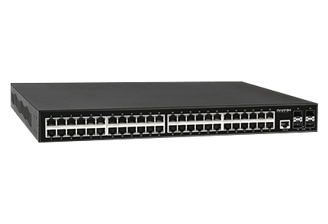Reducing Latency in Pro-AV Systems: Best Practices
#AVCentricNetworking #Avixa, #Cedia, #AVNU, #SDVoE #AVoIP #AVoverIP #proav #AVTweeps
Arthur de Jager - Niveo Professional
8/22/20245 min read


Reducing Latency in Pro-AV Systems: Best Practices
Introduction
In the world of professional audio-visual (Pro-AV) integration, latency is a critical factor that can make or break the user experience. Latency, or the delay between the input signal and the output response, can cause significant disruptions in AV systems, leading to poor synchronization between audio and video, lag in live events, and a generally unsatisfactory experience. As AV technology advances, the need to minimize latency becomes increasingly important. This blog explores the best practices for reducing latency in Pro-AV systems and concludes with how Niveo Professional switches play a crucial role in achieving low-latency performance.
Understanding Latency in Pro-AV Systems
Latency in AV systems can originate from various sources, including signal processing, network transmission, and the devices themselves. In a typical Pro-AV setup, signals are transmitted from a source (like a microphone or camera) to a processing unit (like a mixer or switcher) and then to output devices (like speakers or displays). Each step in this chain can introduce delays.
Key sources of latency:
Signal Processing: Converting analog signals to digital, encoding and decoding data, and applying effects can add milliseconds of delay.
Network Transmission: Data packets traveling across the network can experience delays due to congestion, routing inefficiencies, or bandwidth limitations.
Devices: Each device in the chain, from cameras to speakers, may introduce its own latency due to internal processing.
Best Practices for Reducing Latency
1. Optimize Network Infrastructure
A robust and optimized network infrastructure is foundational to reducing latency. Here are some strategies:
Use High-Speed Connections: Ensure that all network connections use high-speed Ethernet cables and switches. Fiber optic cables are ideal for long distances due to their low latency and high bandwidth capabilities.
Minimize Hops: Reduce the number of hops (intermediate devices) between source and destination. Each hop introduces a delay, so a more direct path is preferable.
Segment Your Network: Use VLANs (Virtual Local Area Networks) to segment AV traffic from other network traffic. This reduces congestion and prioritizes AV data.
2. Implement Quality of Service (QoS)
QoS is a network feature that prioritizes certain types of traffic. By configuring QoS settings, you can ensure that AV data gets priority over less critical traffic, minimizing delays.
Prioritize AV Traffic: Set AV streams to high priority to ensure they are transmitted without delay.
Bandwidth Reservation: Reserve a portion of your network's bandwidth specifically for AV traffic to prevent congestion.
3. Choose Low-Latency Hardware
Selecting the right hardware is crucial for minimizing latency. Consider the following:
Low-Latency Codecs: Use codecs designed for low-latency performance. These codecs compress and decompress data quickly, reducing processing time.
High-Performance Switches and Routers: Invest in switches and routers that are optimized for AV applications and offer low-latency features.
Professional AV Equipment: Use professional-grade AV equipment that is designed to minimize processing delays.
4. Optimize Signal Processing
Efficient signal processing can significantly reduce latency. Strategies include:
Direct Signal Paths: Use direct signal paths where possible, avoiding unnecessary processing steps.
Efficient Processing Units: Choose processing units that are designed for low latency and high performance. Avoid adding unnecessary effects or processing steps that can introduce delays
5. Regularly Monitor and Maintain Your Network
Continuous monitoring and maintenance can help identify and resolve latency issues promptly.
Network Monitoring Tools: Use network monitoring tools to track latency and identify bottlenecks in real time.
Regular Updates: Keep all firmware and software up to date to benefit from performance improvements and bug fixes.
Routine Checks: Conduct routine checks of all network components to ensure they are functioning optimally and not introducing unnecessary delays.
6. Synchronize Audio and Video
Ensuring that audio and video are synchronized is critical for reducing perceived latency. Techniques include:
Lip Sync Correction: Use lip sync correction tools to align audio and video signals.
Timecode Synchronization: Implement timecode synchronization across devices to ensure all components are in sync.
Case Studies and Real-World Applications
1. Live Events
In live events, latency can cause significant issues, such as delayed sound reaching the audience or unsynchronized video displays. By implementing high-speed network infrastructure, prioritizing AV traffic with QoS, and using professional-grade AV equipment, integrators can ensure a seamless experience. For example, a concert venue using low-latency codecs and fiber optic connections can minimize the delay between the stage performance and what the audience sees and hears.
2. Corporate Conferencing
In corporate conferencing, latency can disrupt communication, causing frustration among participants. Implementing VLANs to segment AV traffic and using high-performance switches can significantly reduce delays. A company utilizing these strategies can ensure that video calls and presentations run smoothly, enhancing productivity and collaboration.
3. Educational Institutions
For educational institutions, latency can affect the delivery of online lectures and interactive sessions. By using low-latency hardware and optimizing signal processing, schools and universities can provide a better learning experience. For instance, a university implementing these practices can deliver real-time interactive classes without noticeable delays, keeping students engaged.
How Niveo Professional Contributes to Reducing Latency
Niveo Professional switches are designed to meet the stringent demands of Pro-AV systems, particularly in reducing latency. These switches come equipped with advanced QoS features that prioritize AV traffic, ensuring that audio and video data is transmitted without delay. By implementing VLANs, Niveo switches can segment AV traffic from other network activities, reducing congestion and optimizing bandwidth usage.
Furthermore, Niveo Professional switches are built with high-speed Ethernet ports and support for fiber optic connections, which are essential for maintaining low latency over long distances. Their robust hardware and firmware are optimized for rapid data processing, minimizing the delay introduced by network components. By integrating Niveo Professional switches into their setups, Pro-AV integrators can achieve superior performance, ensuring that latency is kept to a minimum and delivering a seamless AV experience.
In conclusion, reducing latency in Pro-AV systems is crucial for delivering high-quality, synchronized audio and video experiences. By optimizing network infrastructure, implementing QoS, choosing low-latency hardware, and leveraging the advanced features of Niveo Professional switches, integrators can effectively minimize delays and enhance the overall performance of their AV systems. For those looking to elevate their Pro-AV installations, Niveo Professional offers the tools and technology necessary to meet the demands of today’s high-performance AV environments.
About Niveo Professional
Niveo Professional is a leading manufacturer of Network Equipment for pro-AV. A pioneer in the industry, that has brought many innovations to make life of the Integrator Easy!
About Arthur de Jager
Arthur de Jager is co-founder of Niveo Professional, Entrepreneur and author and active in the AV-industry for over 30 Years.






